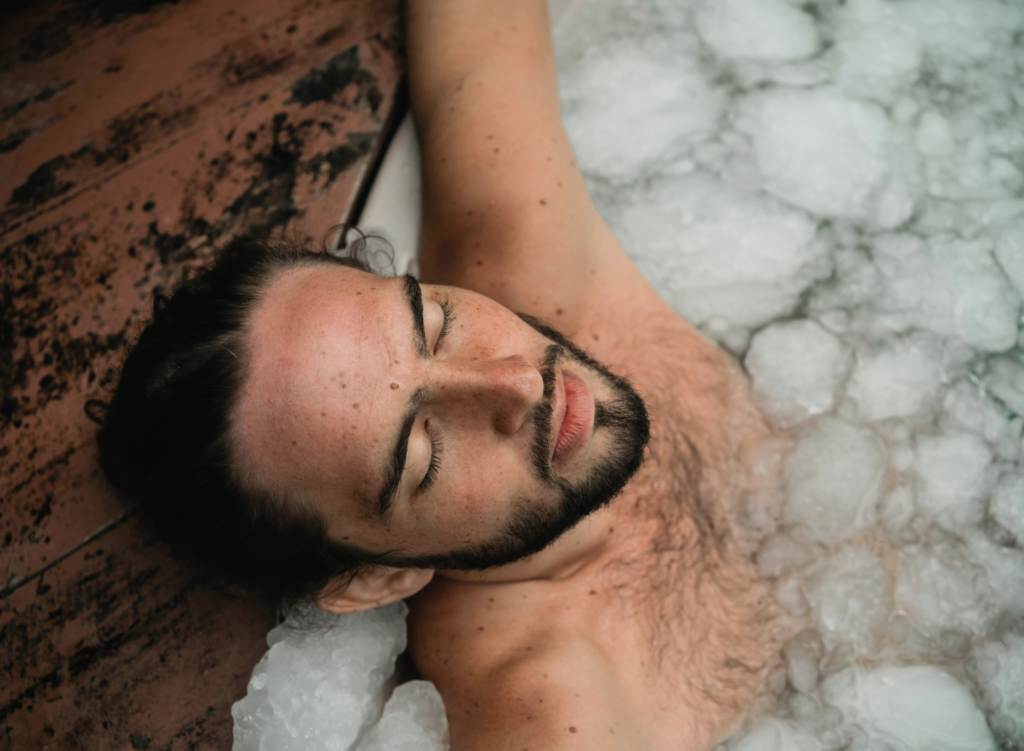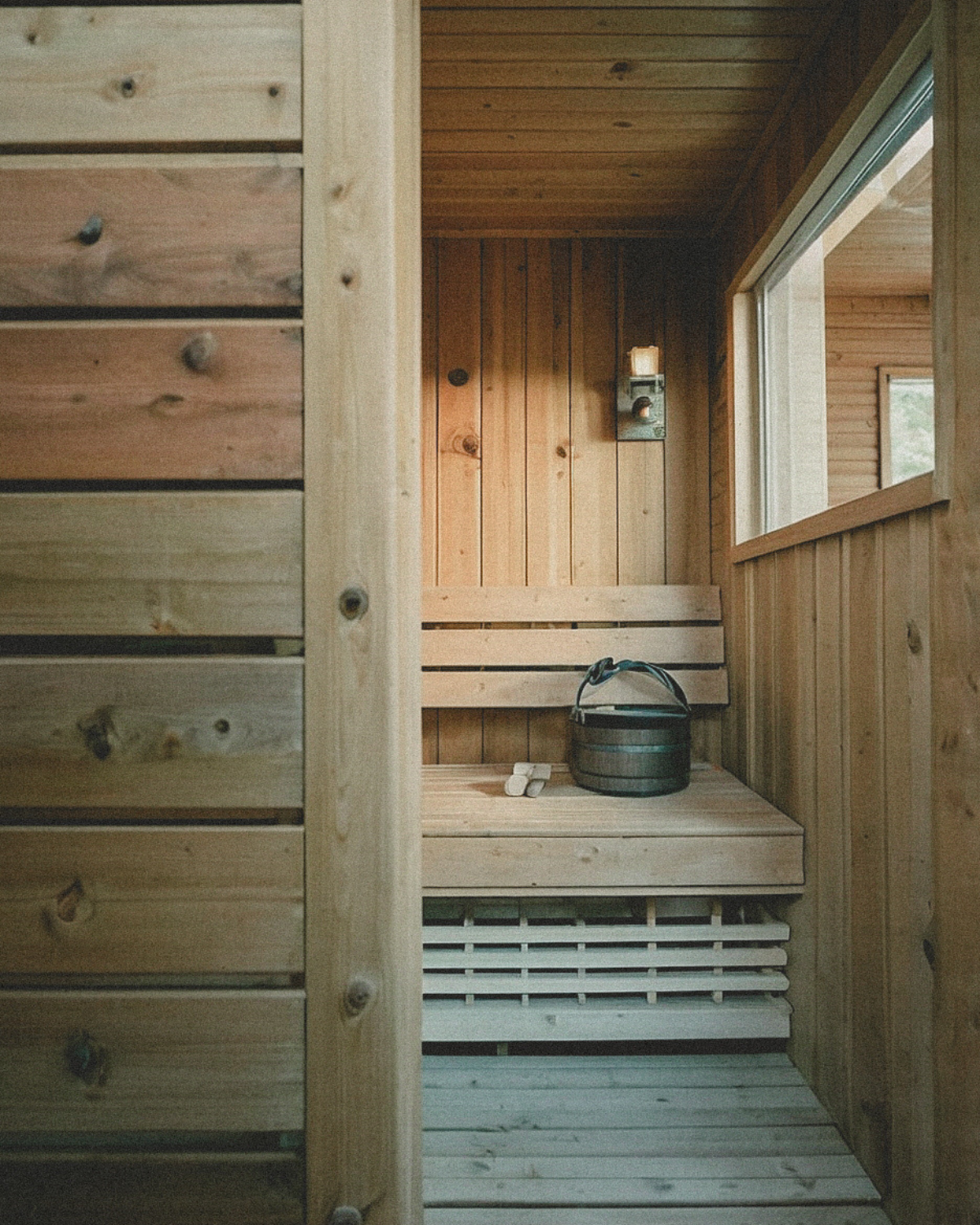WRITTEN BY JENNA HUBBARD

The Benefits of Cold Plunging for Mental Health and Muscle Recovery
In the wellness world, cold plunging is the latest fast-growing trend, and for a good reason. Whether you’re scrolling through Instagram or listening to a podcast, it seems everyone is raving about how submerging themselves in icy water has had an incredible impact on their physical and mental well-being.
The benefits of cold plunging seem almost limitless. Regularly braving cold water can do wonders for boosting your mood and melting away stress by helping regulate the nervous system. Plus, it can help speed up muscle recovery after a tough workout, thanks to its inflammation-reducing magic. Even a quick cold shower could be the secret to building resilience, helping your body and mind better adapt to life’s daily challenges.
The Benefits of Cold Plunging
1. Boost Your Happiness with a Chill
If you’re looking for a natural mood booster, cold plunging might be the answer you’ve been looking for. Immersing yourself in cold water can trigger a release of dopamine and endorphins—those feel-good chemicals responsible for happiness and alertness.
But what’s even more fascinating is how cold plunging helps regulate the nervous system. The sudden shock of cold water activates the sympathetic nervous system (responsible for the fight-or-flight response), but as you breathe through the initial discomfort, the parasympathetic nervous system kicks in to calm the body down. This back-and-forth between stress and calm builds emotional resilience, helping you handle daily challenges with more space. So, in short, cold plunging can make you feel happier and more equipped to deal with life’s stressors.
2. Ditch Cortisol with a Quick Plunge
Chronic stress is one of the leading causes of mental and physical health issues, and if left unchecked, elevated cortisol levels (the stress hormone) can wreak havoc on your body. Queue cold plunging—a fast, effective way to reduce cortisol and help your body manage other stressors more efficiently.
Cold plunging shocks the body into what is essentially a mini stress response, but instead of spiraling into overwhelm, the body learns how to recover and reset. Over time, this practice can lead to lower baseline cortisol levels, leaving you better equipped to handle daily challenges. By regularly subjecting yourself to the discomfort of cold water, you’re training your body and mind to adapt and overcome.
When you willingly expose yourself to cold water, you’re also practicing mindfulness—staying present in a stressful situation while learning to control your breath and thoughts. This practice carries over into other areas of life, making you more resilient in the face of adversity. After all, if you can endure freezing water for a few minutes, that tough conversation with your boss doesn’t seem so daunting.
3. Your Post-Workout Recovery Hack
After a grueling workout, your muscles are inflamed, sore, and tired. Cold plunging can help reduce inflammation by constricting blood vessels and slowing down the flow of blood, which limits swelling in your muscles. Once you step out of the water and warm back up, your blood vessels dilate, and fresh, oxygenated blood rushes to your muscles, promoting faster healing.
Athletes swear by cold plunging as an effective way to manage post-exercise muscle soreness. But even if you’re not training for a marathon, cold plunging can be an excellent tool for anyone who experiences muscle fatigue or inflammation from daily activities.
Alternatives to Cold Plunging
While cold plunging has incredible benefits, it’s not for everyone. Whether you are a beginner just starting out or don’t have access to an icy lake, there are still plenty of ways to incorporate cold therapy into your wellness routine without going to extremes.
1. Cold Showers
If cold plunging feels too extreme, start with cold showers. Begin with a warm shower and gradually lower the temperature until you’re comfortable standing under cold water for 30 to 90 seconds. Cold showers provide many of the same benefits, such as improved circulation, reduced inflammation, and a boost to your mood.
The best part? Cold showers are accessible, quick, and don’t require any special equipment. Plus, they’re an excellent way to introduce your body to the concept of cold exposure without the shock of full immersion.
2. Facial or Hand Plunge
If you’re new to cold plunging and feeling hesitant, it’s best to start small. A great way to ease into the practice is by trying a facial plunge or hand plunge. Simply fill a bowl with cold water and ice and submerge your face or hands for 15-30 seconds. This allows your body to gradually adjust to the sensation of cold exposure, helping you build tolerance without the full shock of an entire plunge. Over time, you can work up to more immersive experiences as your comfort level increases.
3. Cryotherapy
If you’re looking for a modern (and less wet) alternative, cryotherapy is a high-tech solution. During a cryotherapy session, you step into a chamber filled with super-cooled air for about 2-3 minutes. The process exposes your body to temperatures as low as -200°F, promoting many of the same benefits as cold plunging, such as reduced inflammation and improved recovery times.
While cryotherapy sessions can be pricey, they’re becoming more widely available at wellness centers and spas, making it an appealing alternative for those who prefer a professional environment over DIY cold plunging.
Conclusion
Cold plunging is more than just a trend; it’s a powerful wellness tool that offers myriad benefits, from improved mental health to faster muscle recovery. If you’re looking for a natural way to boost your mood, reduce stress, and enhance your physical recovery, cold therapy might be the perfect addition to your wellness routine.
But remember, wellness is about finding what works best for you. Whether you opt for a full cold plunge, cold showers, or try cryotherapy, the key is consistency and listening to your body. So, are you ready to take the plunge?

Jenna Hubbard is a seasoned content writer with over a decade of experience crafting engaging and impactful content for diverse audiences. Her expertise spans a wide array of topics including holistic healthcare, technology and AI, lifestyle, and much more. Jenna lives in sunny Southern California (and also on the internet). Outside of work, she can be found hiking along the California coastline and getting lost in a good book.



